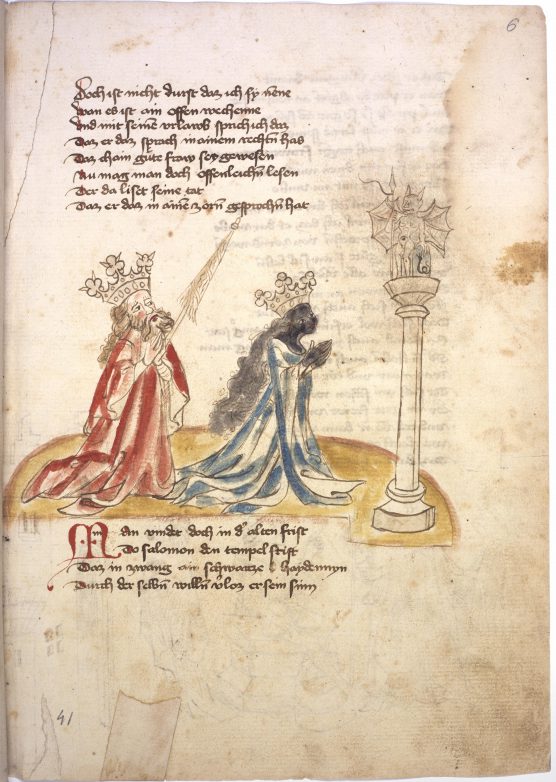In the twelfth and thirteenth centuries, as the Holy Roman Empire developed a new iconography to justify its expansive pretensions, certain Christian figures received Black features. Along with St. Maurice and the Black Magus, the Queen of Sheba began to appear as a positive Black figure, a noble queen who represented the possibility of converting pagans to Christianity. However, this representation was not to last. By the fourteenth and fifteenth century a more critical, even misogynist interpretation of her relationship to Solomon had become dominant. She began to appear as an unambiguously negative temptress, an erotic figure who led Solomon away from godliness and wisdom. The Queen’s exotic otherness was not as relevant in this context, so she appeared less often as Black. Nevertheless, this shift was important for introducing new, negative depictions of Black women.
The image below comes from a book of virtue by the Tyrolean poet Hans Vintler (d. 1419) and shows Solomon and the Queen of Sheba worshiping a demonic idol.
Jeff Bowersox
deutsch
Source: Hans Vintler, Die Pluemen der Tugent (Tirol 1411), Österreichische Nationalbibliothek Cod.13567 fol.6r.

The Queen of Sheba becomes a temptress (1411) by Jeff Bowersox is licensed under a Creative Commons Attribution-ShareAlike 4.0 International License.
Permissions beyond the scope of this license may be available at https://blackcentraleurope.com/who-we-are/.
